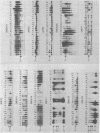Abstract
A series of twelve XX males and their relatives have been examined by Southern blot analysis with fourteen different Y recombinants. The pattern of Y sequences present shows considerable variation between XX males. Furthermore, on the basis of the terminal transfer model, anomalous patterns of Y sequences are evident in certain XX males in that sequences located as proximal Yp by means of a Y deletion panel are found to be present in the absence of distal sequences. These anomalies can be resolved by proposing that the order of Yp sequences varies in the population in the form of inversion polymorphisms in the Y chromosomes of normal males. Alternatively, it is necessary to invoke multiple recombination events between the X and Y chromosomes to explain the patterns of Y sequences in these XX males. Southern analysis on DNA prepared from flow sorted X chromosomes of XX males indicates that the Y sequences in these patients are linked to X chromosomes.
Full text
PDF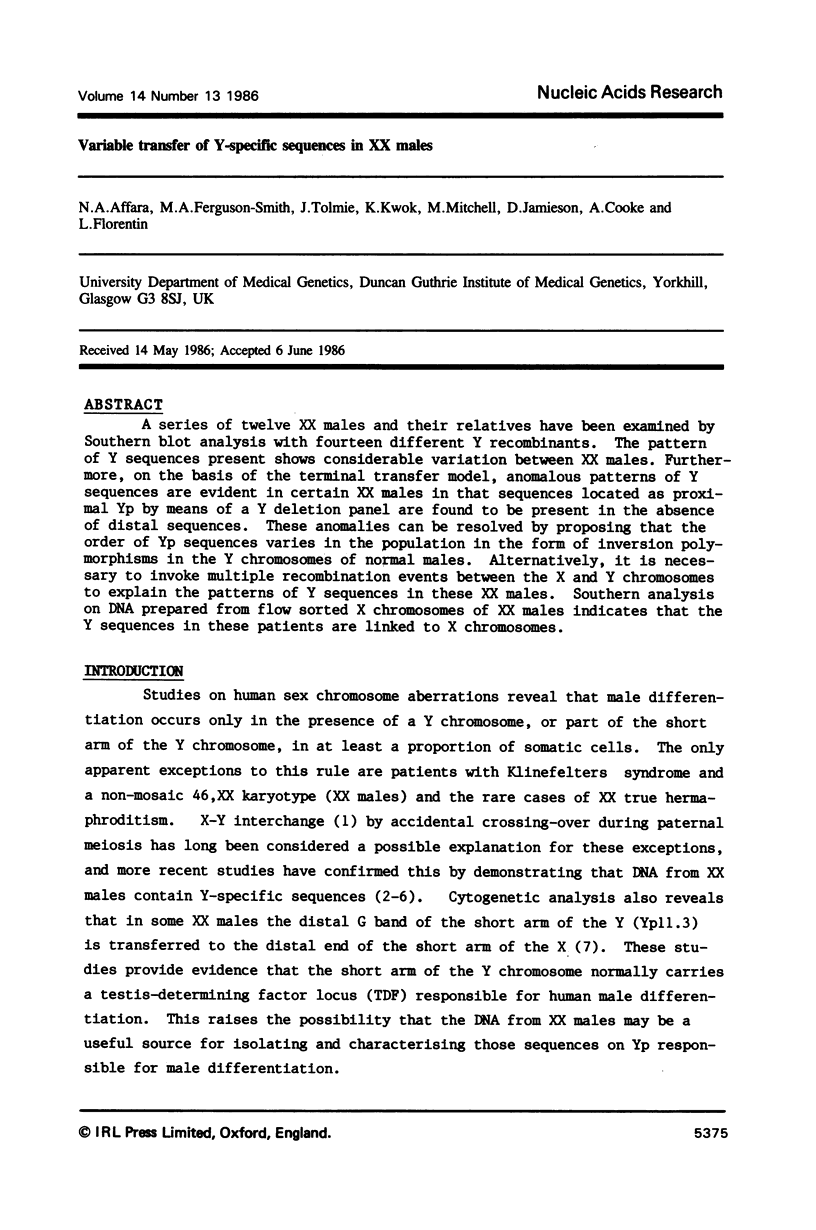
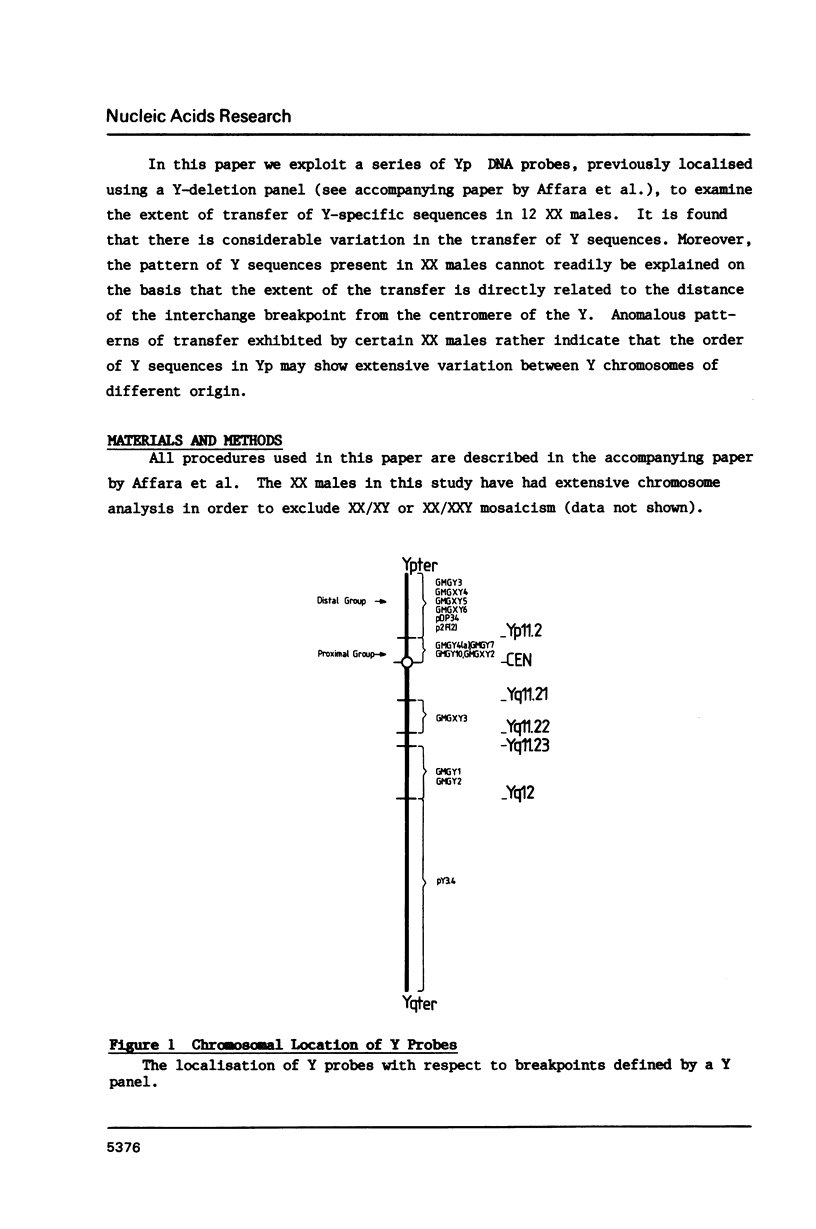
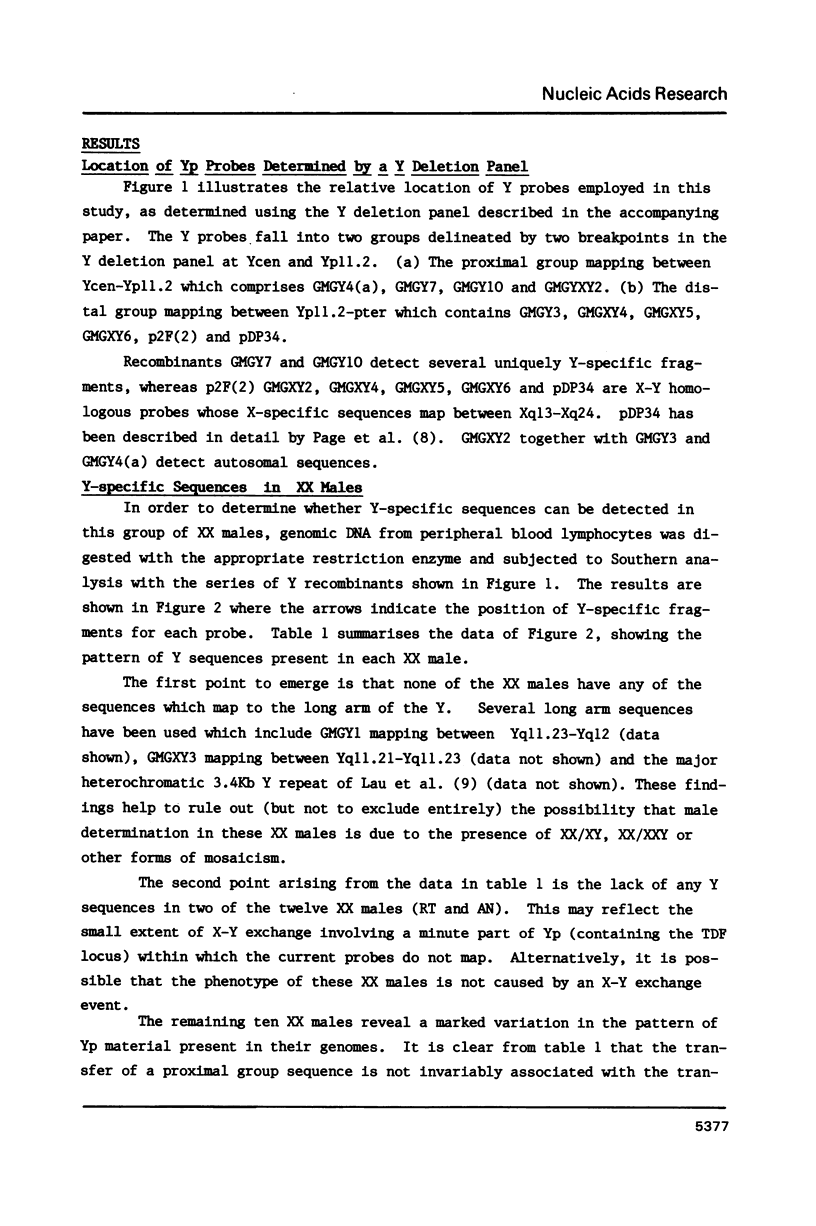
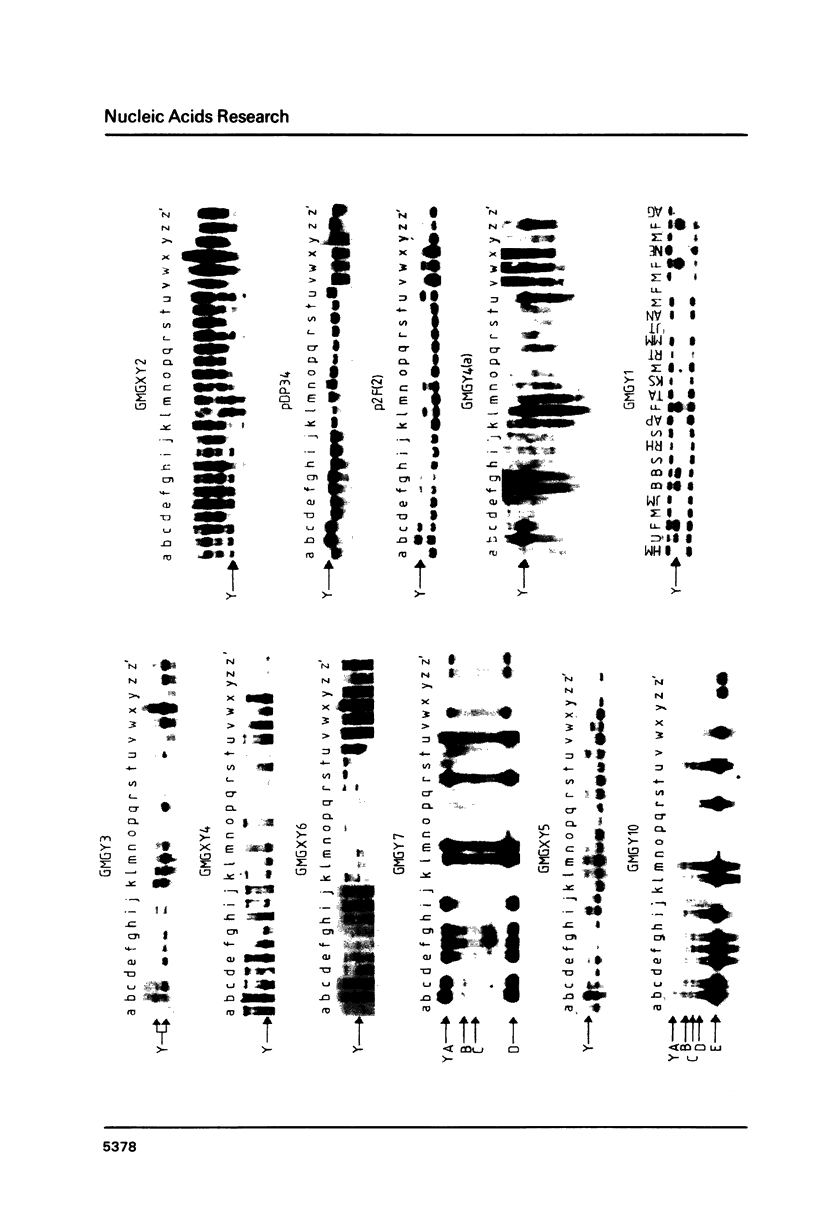
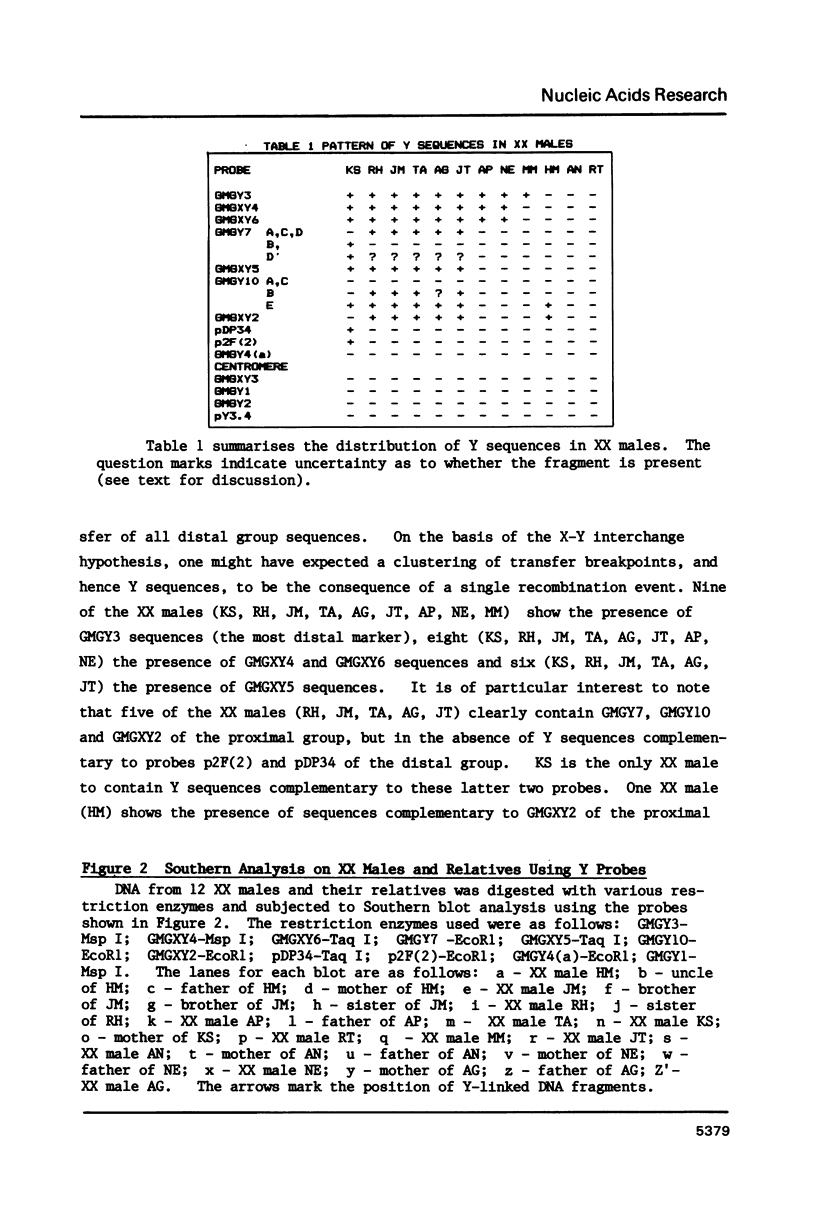
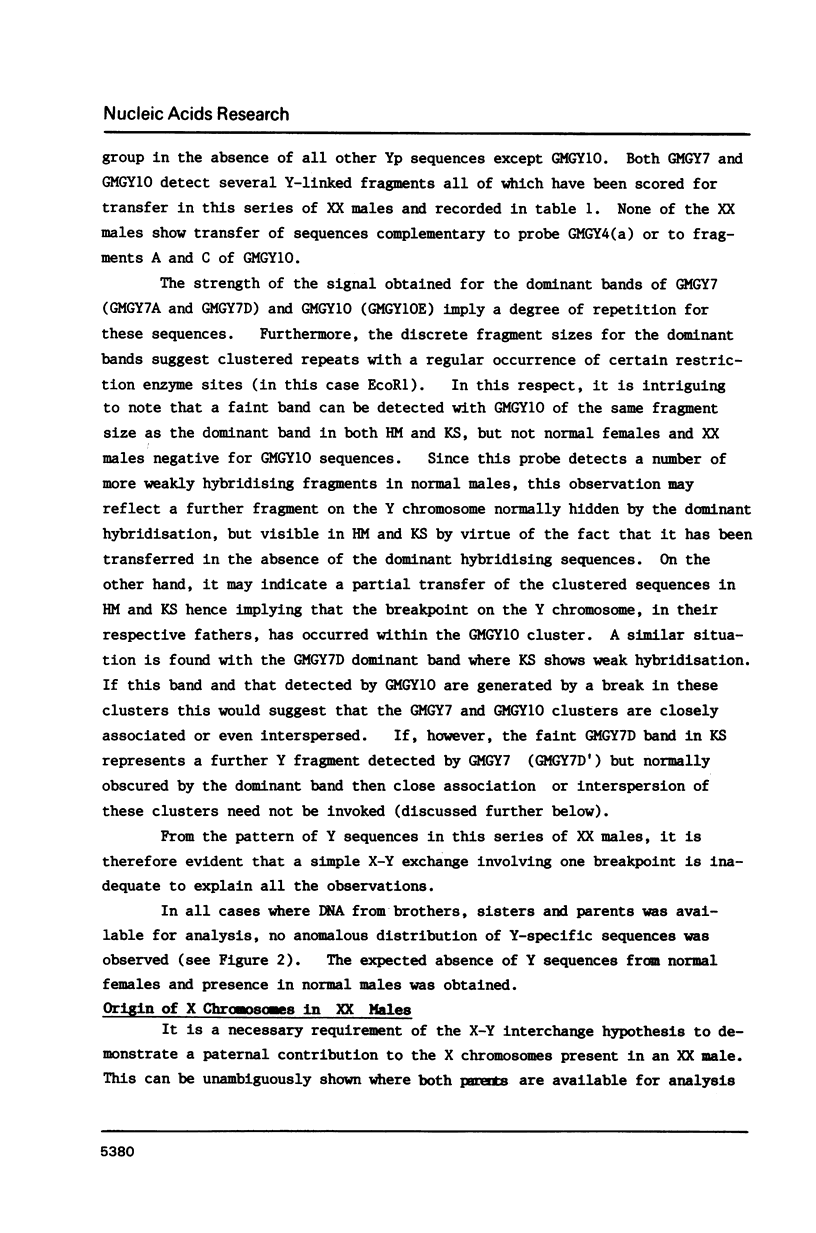
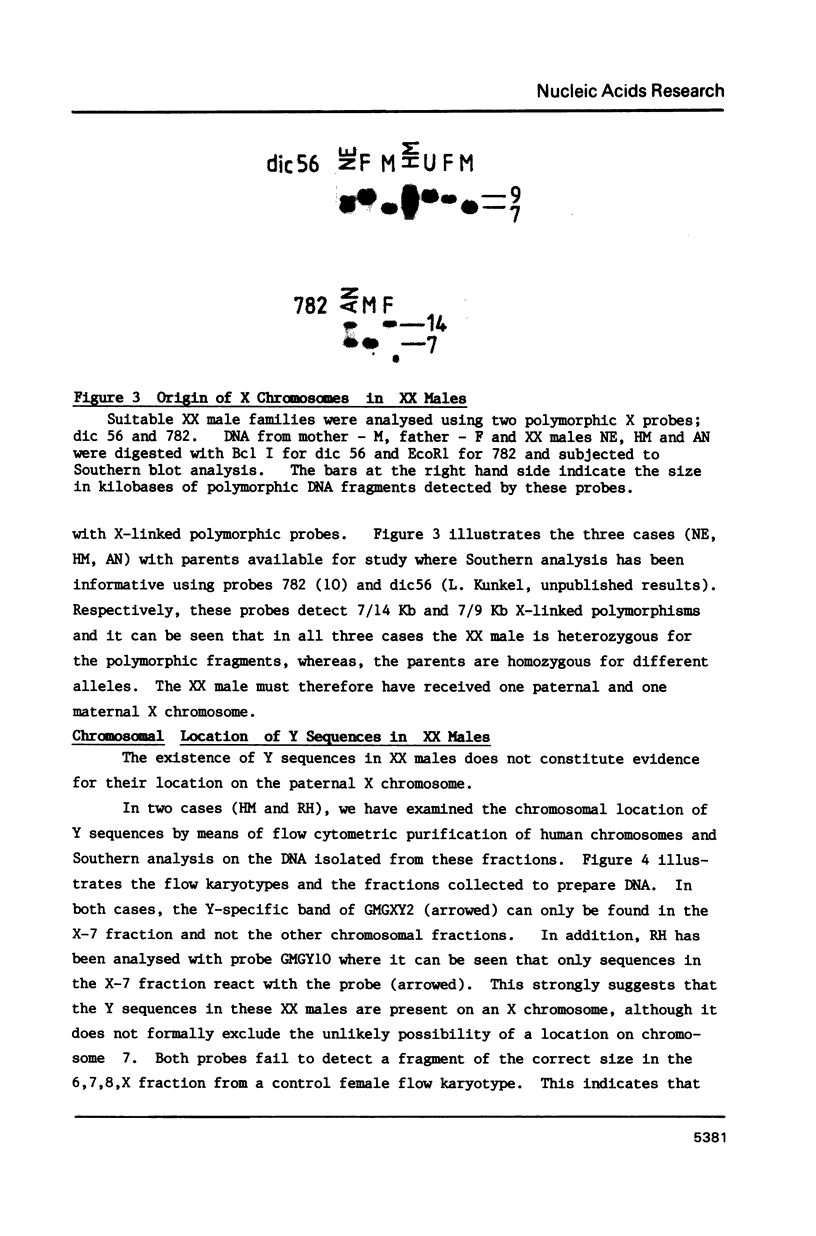
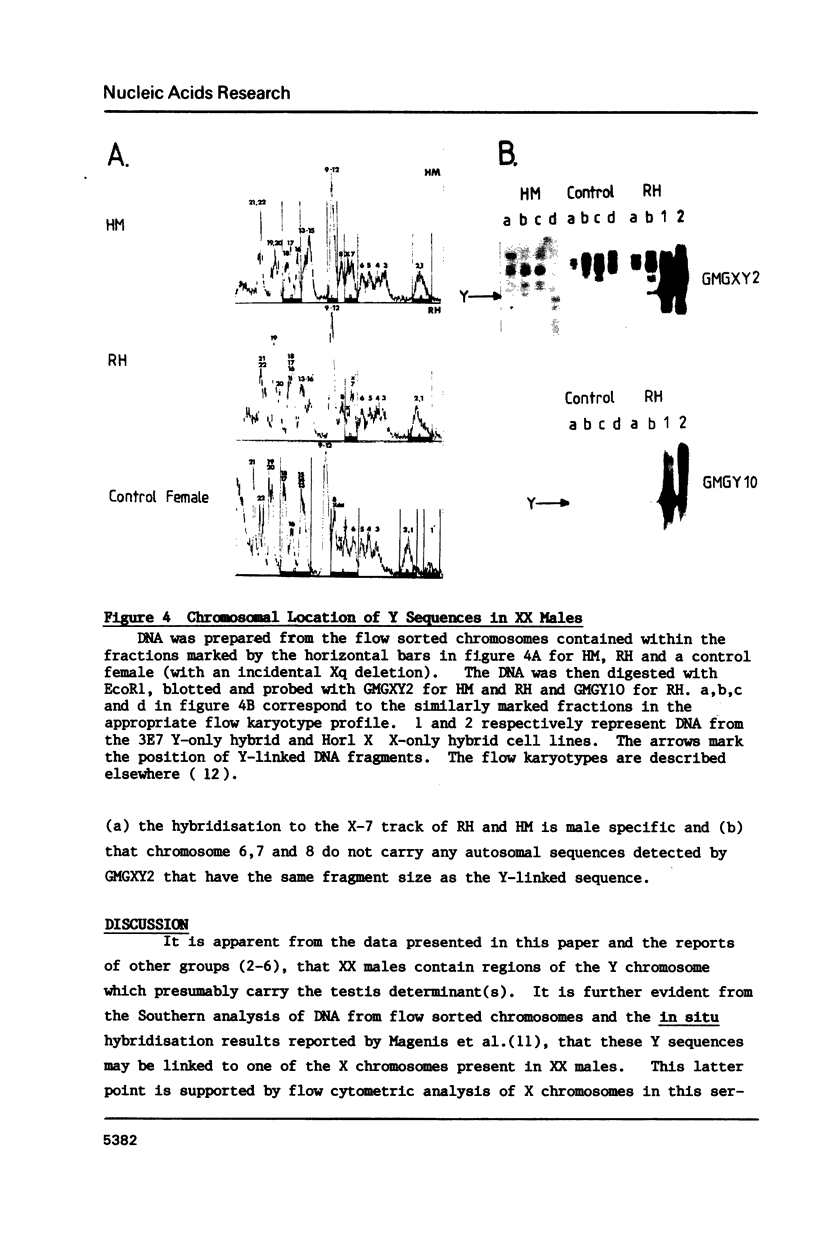
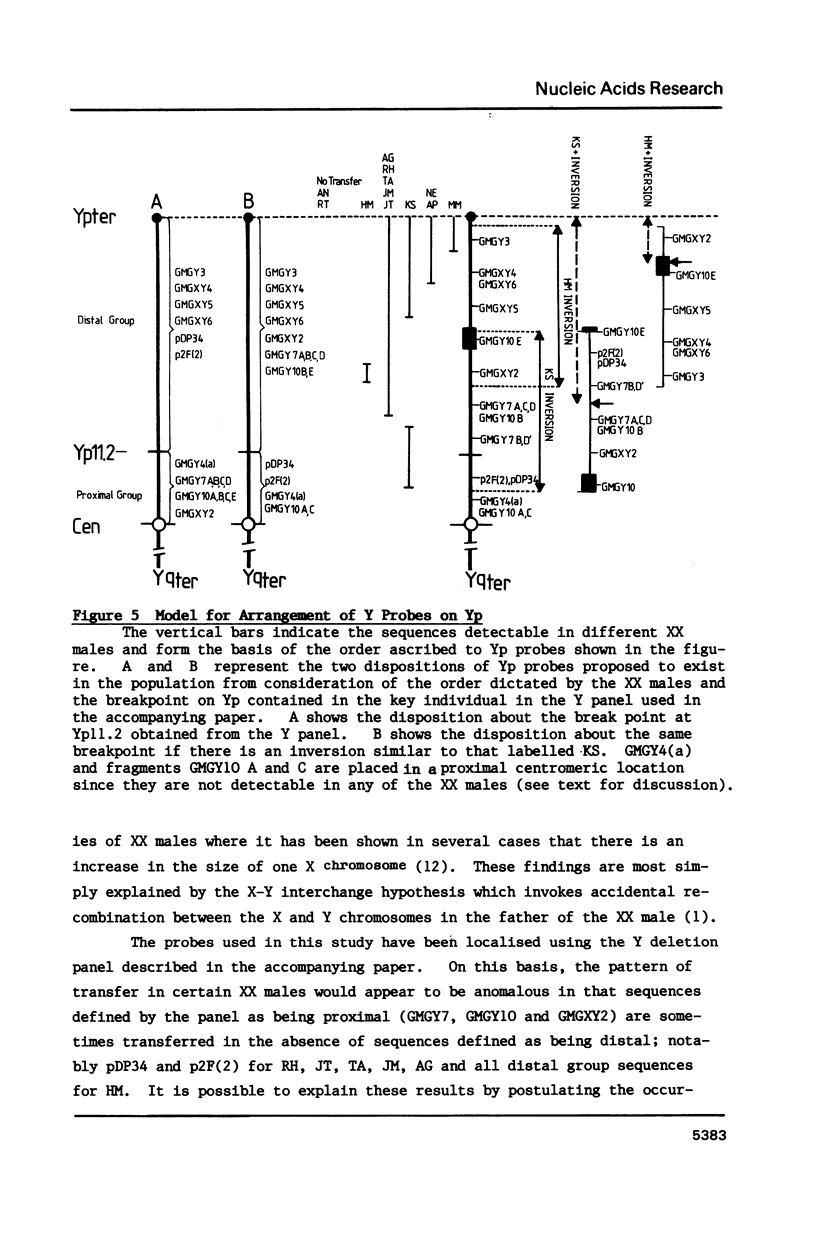
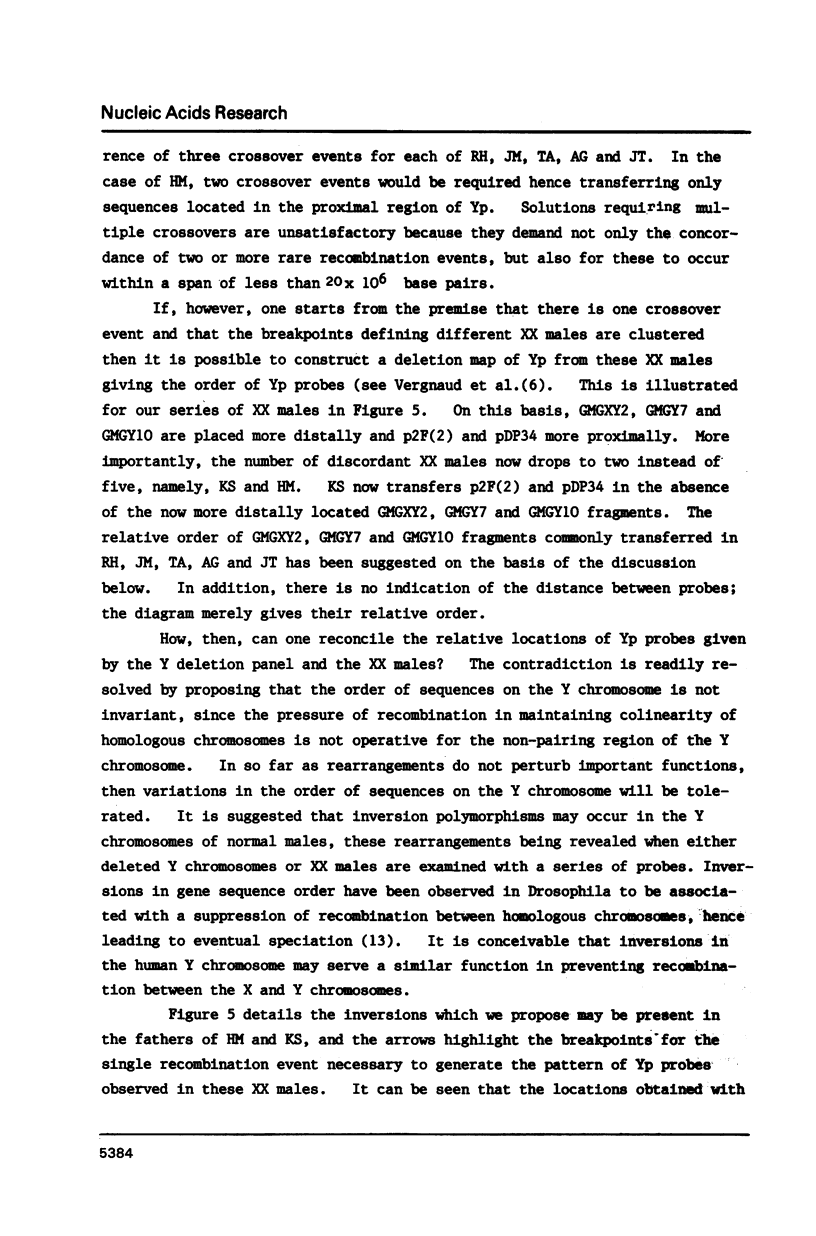

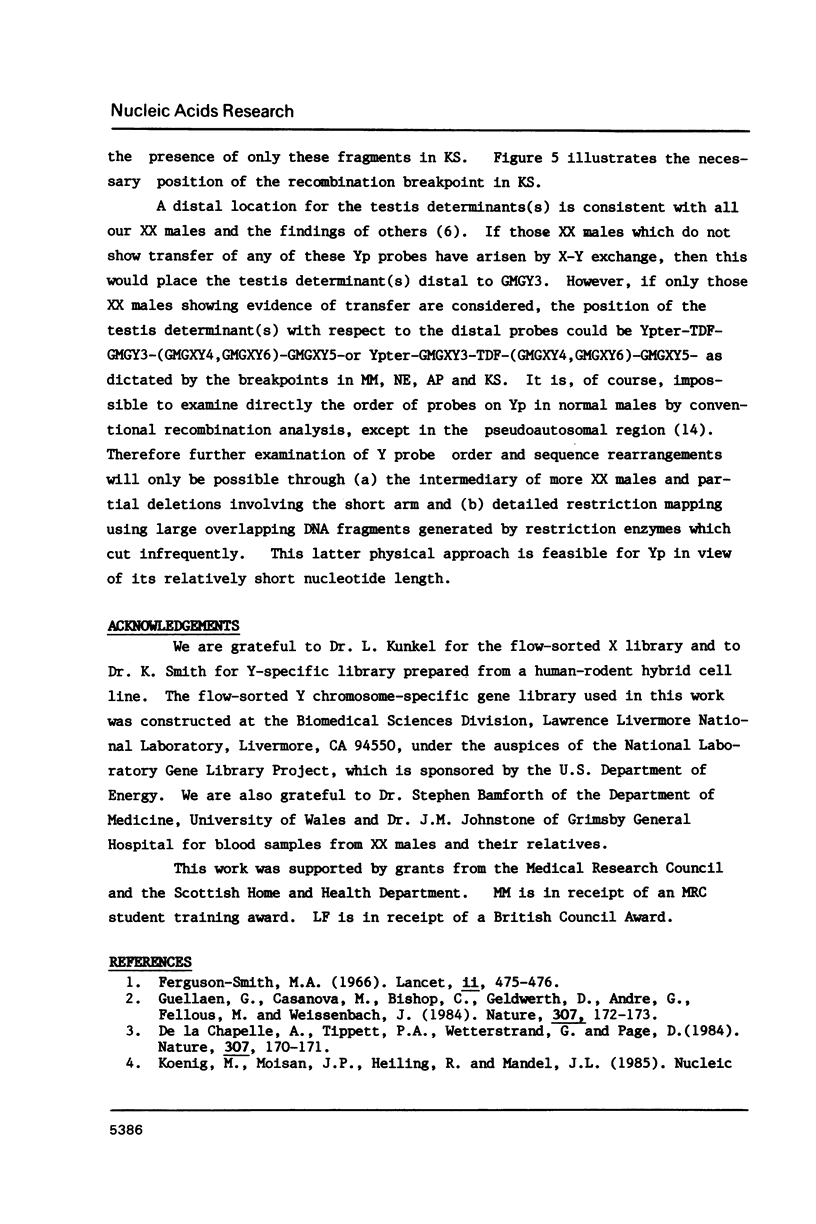
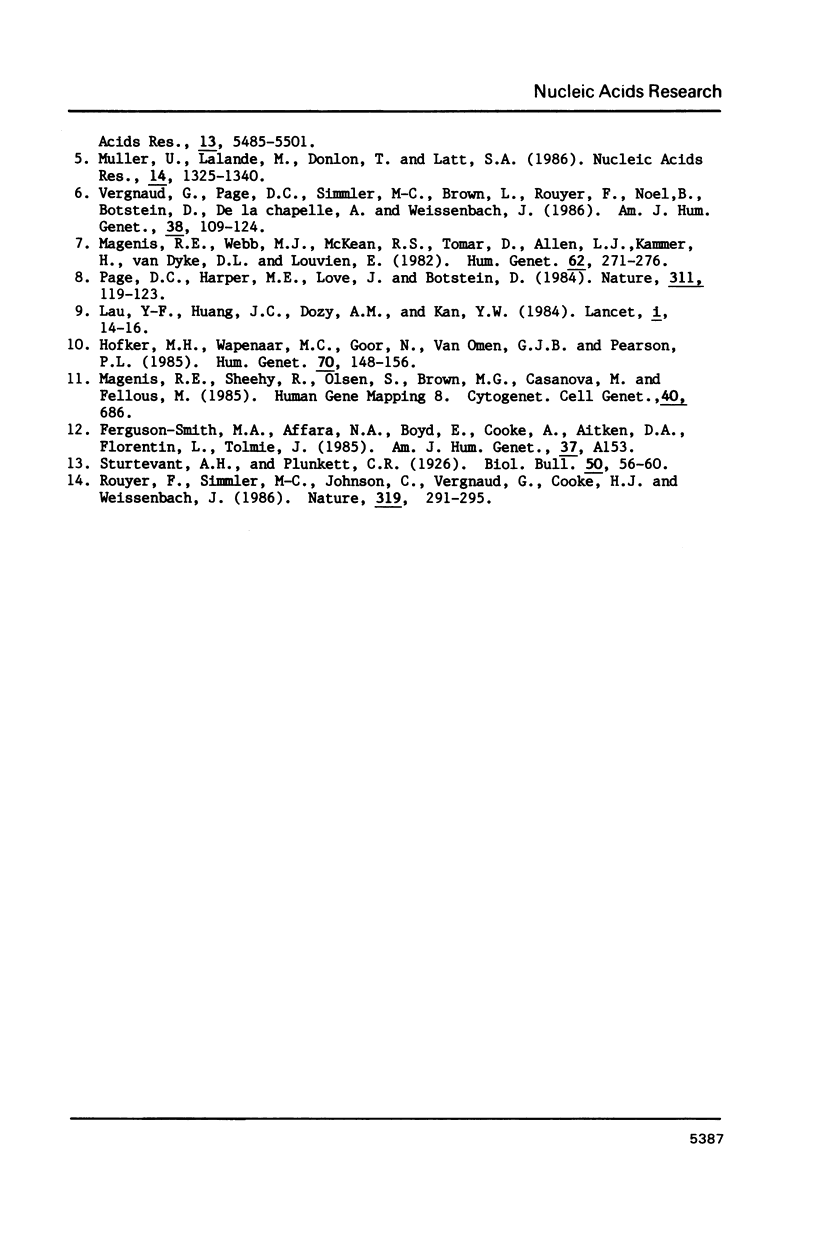
Images in this article
Selected References
These references are in PubMed. This may not be the complete list of references from this article.
- Ferguson-Smith M. A. X-Y chromosomal interchange in the aetiology of true hermaphroditism and of XX Klinefelter's syndrome. Lancet. 1966 Aug 27;2(7461):475–476. doi: 10.1016/s0140-6736(66)92778-4. [DOI] [PubMed] [Google Scholar]
- Guellaen G., Casanova M., Bishop C., Geldwerth D., Andre G., Fellous M., Weissenbach J. Human XX males with Y single-copy DNA fragments. Nature. 1984 Jan 12;307(5947):172–173. doi: 10.1038/307172a0. [DOI] [PubMed] [Google Scholar]
- Hofker M. H., Wapenaar M. C., Goor N., Bakker E., van Ommen G. J., Pearson P. L. Isolation of probes detecting restriction fragment length polymorphisms from X chromosome-specific libraries: potential use for diagnosis of Duchenne muscular dystrophy. Hum Genet. 1985;70(2):148–156. doi: 10.1007/BF00273073. [DOI] [PubMed] [Google Scholar]
- Lau Y. F., Huang J. C., Dozy A. M., Kan Y. W. A rapid screening test for antenatal sex determination. Lancet. 1984 Jan 7;1(8367):14–16. doi: 10.1016/s0140-6736(84)90182-x. [DOI] [PubMed] [Google Scholar]
- Magenis R. E., Webb M. J., McKean R. S., Tomar D., Allen L. J., Kammer H., Van Dyke D. L., Lovrien E. Translocation(X;Y)(p22.33;p11.2) in XX males: etiology of male phenotype. Hum Genet. 1982;62(3):271–276. doi: 10.1007/BF00333535. [DOI] [PubMed] [Google Scholar]
- Müller U., Lalande M., Donlon T., Latt S. A. Moderately repeated DNA sequences specific for the short arm of the human Y chromosome are present in XX males and reduced in copy number in an XY female. Nucleic Acids Res. 1986 Feb 11;14(3):1325–1340. doi: 10.1093/nar/14.3.1325. [DOI] [PMC free article] [PubMed] [Google Scholar]
- Page D. C., Harper M. E., Love J., Botstein D. Occurrence of a transposition from the X-chromosome long arm to the Y-chromosome short arm during human evolution. Nature. 1984 Sep 13;311(5982):119–123. doi: 10.1038/311119a0. [DOI] [PubMed] [Google Scholar]
- Rouyer F., Simmler M. C., Johnsson C., Vergnaud G., Cooke H. J., Weissenbach J. A gradient of sex linkage in the pseudoautosomal region of the human sex chromosomes. Nature. 1986 Jan 23;319(6051):291–295. doi: 10.1038/319291a0. [DOI] [PubMed] [Google Scholar]
- Vergnaud G., Page D. C., Simmler M. C., Brown L., Rouyer F., Noel B., Botstein D., de la Chapelle A., Weissenbach J. A deletion map of the human Y chromosome based on DNA hybridization. Am J Hum Genet. 1986 Feb;38(2):109–124. [PMC free article] [PubMed] [Google Scholar]
- de la Chapelle A., Tippett P. A., Wetterstrand G., Page D. Genetic evidence of X-Y interchange in a human XX male. Nature. 1984 Jan 12;307(5947):170–171. doi: 10.1038/307170a0. [DOI] [PubMed] [Google Scholar]



